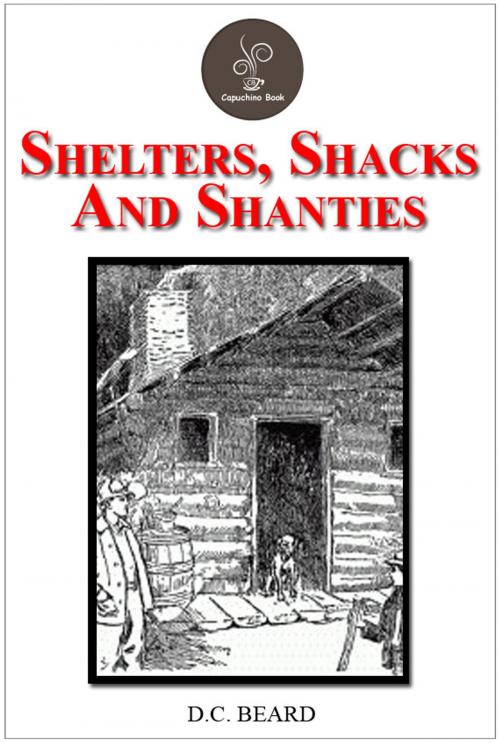Shelters, Shacks And Shanties by D.C. Beard
Nonfiction, Home & Garden, The Home, Woodworking, Do It Yourself| Author: | D.C. Beard | ISBN: | 1230000126329 |
| Publisher: | Capuchino Book | Publication: | April 20, 2013 |
| Imprint: | Language: | English |
| Author: | D.C. Beard |
| ISBN: | 1230000126329 |
| Publisher: | Capuchino Book |
| Publication: | April 20, 2013 |
| Imprint: | |
| Language: | English |
Shelters, Shacks And Shanties by D.C. Beard
-Included TOC for Reader.
This sample in ebook;
Now that we know how to make doors and door-latches, locks, bolts, and bars, we may busy ourselves with building an American log cabin. It is all well enough to build our shacks and shanties and camps of logs with the bark on them, but, when one wishes to build a log cabin, one wants a house that will last. Abraham Lincoln's log cabin is still in existence, but it was built of logs with no bark on them. There is a two-story log house still standing in Dayton, O.; it is said to have been built before the town was there; but there is no bark on the logs. Bark holds moisture and moisture creates decay by inviting fibrous and threadlike cousins of the toadstool to grow on the damp wood and work their way into its substance. The bark also shelters all sorts of boring insects and the boring insects make holes through the logs which admit the rain and in the end cause decay, so that the first thing to remember is to peel the logs of which you propose to build the cabin. There is now, or was lately, a log cabin on Hempstead Plains, L. I., near the road leading from Mineola to Manhassett; it is supposed to have been built when the first white settlers began to arrive on Long Island, but this was what was known as a "blockhouse," a small fort. In 1906 Mr. I. P. Sapington said: "I think that I am the only man now living who helped build General Grant's log cabin." Grant's house was what is popularly known in the South as a[162] "saddle-bag" log house, or, as the old Southwestern settlers called it, a "two-pen," the pens being two enclosures with a wide passageway or gallery between them, one roof extending over both pens and the gallery.
Shelters, Shacks And Shanties by D.C. Beard
-Included TOC for Reader.
This sample in ebook;
Now that we know how to make doors and door-latches, locks, bolts, and bars, we may busy ourselves with building an American log cabin. It is all well enough to build our shacks and shanties and camps of logs with the bark on them, but, when one wishes to build a log cabin, one wants a house that will last. Abraham Lincoln's log cabin is still in existence, but it was built of logs with no bark on them. There is a two-story log house still standing in Dayton, O.; it is said to have been built before the town was there; but there is no bark on the logs. Bark holds moisture and moisture creates decay by inviting fibrous and threadlike cousins of the toadstool to grow on the damp wood and work their way into its substance. The bark also shelters all sorts of boring insects and the boring insects make holes through the logs which admit the rain and in the end cause decay, so that the first thing to remember is to peel the logs of which you propose to build the cabin. There is now, or was lately, a log cabin on Hempstead Plains, L. I., near the road leading from Mineola to Manhassett; it is supposed to have been built when the first white settlers began to arrive on Long Island, but this was what was known as a "blockhouse," a small fort. In 1906 Mr. I. P. Sapington said: "I think that I am the only man now living who helped build General Grant's log cabin." Grant's house was what is popularly known in the South as a[162] "saddle-bag" log house, or, as the old Southwestern settlers called it, a "two-pen," the pens being two enclosures with a wide passageway or gallery between them, one roof extending over both pens and the gallery.















